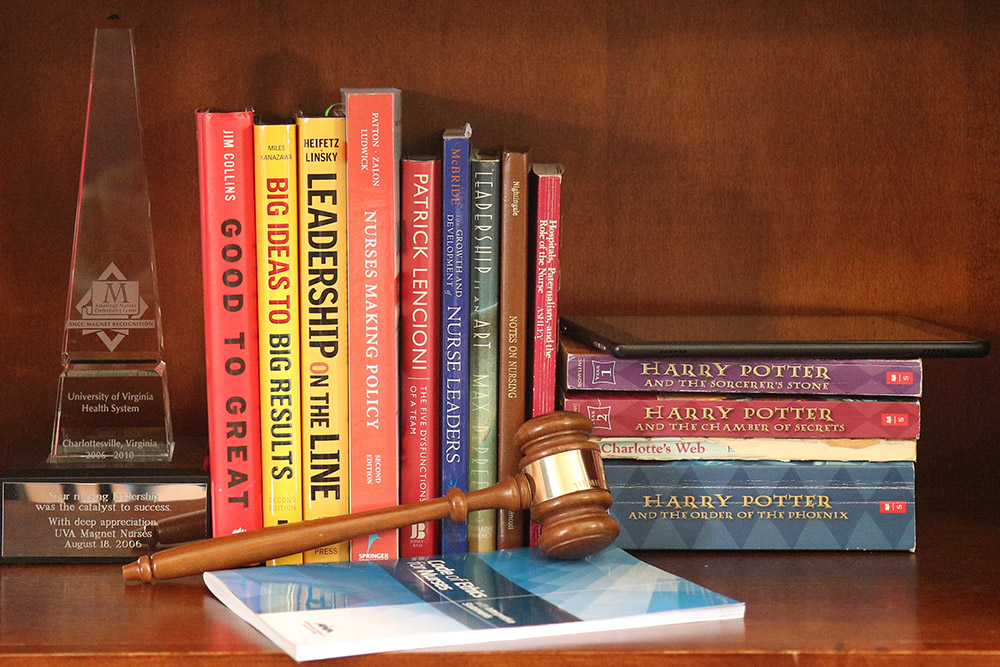On My Bookshelf: Pam Cipriano

Pamela F. Cipriano, PhD, RN, NEA-BC, FAAN Sadie Heath Cabaniss Professor of Nursing, International Council of Nurses’ President
REQUIRED READING FOR NURSES
While it may sound odd, I think every nurse and nursing student should read the American Nurses Association’s Code of Ethics with Interpretive Statements. The Code is our true North, our profession’s foundational document, and grounds our thinking about what it means to be a nurse and what values, responsibilities, ideals, and obligations we must have.
MOST IMPACTFUL LEADERSHIP BOOK
I read Hospitals, Paternalism, and the Role of the Nurse, by Jo Ann Ashley, which was published in 1976, the same year I graduated from my diploma program. It chronicles hospitals’ development and calls out the sexism that, early on, stifled nurses’ ability to influence health systems. The author ties paternalism to the chronic healthcare issues, noting how women were intentionally held back from solving problems, including what today we call the “social determinants of health.” Ashley says this economic exploitation and oppression kept young women perpetually subservient to physicians.
As feminist thought became more mainstream, this book was a call to action for nurses to challenge power differentials with physicians and hospital administrators, and break apart myths about women, men, and healthcare work as they did. While it’s not a leadership primer per se, understanding the historical context affecting nurses is essential. It sharpened my desire to help nurses ascend to leadership roles and influence policy.
I also like Max De Pree’s Leadership is an Art, which uses stories to humanize the self-examination that leaders need when developing personal value systems and style. Though I’ve read titles on change theory and motivation, I found Leadership on the Line: Staying Alive Through the Dangers of Change, by Ronald Heifetz and Marty Linsky, profoundly influenced how I analyze issues and determine what actions to take to solve complex problems.
FAVORITE CHILDHOOD BOOK
I’m not sure I have a favorite childhood book but do know I read every one of the Nancy Drew mystery series. I also liked The Borrowers, by Mary Norton, and E. B. White’s Charlotte’s Web—before there was a movie.
FOR FUN
For years, when I was developing my leadership and management skills, I read only non-fiction and business literature—often quite boring. That changed in 1997 when my older daughter entered 4th grade, and I attended a conference with her English teacher who made a passionate plea for parents to read with their children. She suggested reading stories being presented in class, the first of which was Tuck Everlasting, by Natalie Babbitt. Later that year, the first Harry Potter book was published, and our reading together stuck: we’d sit together, and my older daughter and I would take turns reading out loud while my younger daughter followed along, rapt. Over the next 10 years, we became devoted Harry Potter fans and eventually needed to have two copies of each book so both daughters could dive into each new release.
Not only was that fun, it reignited my love of fiction. I got back into reading fantasy by Terry Brooks, legal thrillers by John Grisham—I’ve read almost every one of his books—Lee Child’s Jack Reacher series, and anything by David Baldacci. I also like reading about courageous women who significantly shaped the leadership of nations, such as Catherine the Great, and Gail Collins’ When Everything Changed: The Amazing Journey of American Women from 1960 to the Present.
FAVORITE TIME TO READ
I’m pretty devoted to my Kindle. When I travel, it’s a great way not to lug a heavy book with me. I read every night before I go to bed, even if it’s just for twenty minutes, and don’t have a problem falling asleep after screen time. If I’ve got a really thrilling story, I’m apt to get my book out on Saturday mornings, too, and keep reading. Fiction is a nice escape from the daily grind.
